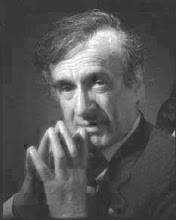The Oral Histories of 9/11
The September 11, 2001 Records:
A rich vein of city records from Sept. 11, including more than 12,000 pages of oral histories rendered in the voices of 503 firefighters, paramedics, and emergency medical technicians, were made public on Aug. 12. The New York Times has published all of them.
The oral histories of dispatch transmissions are transcribed verbatim. They have have not been edited to omit coarse language.
Each person, listed alphabetically, tells his or her story. Each story is a .pdf file that you can download.
These oral histories "were originally gathered on the order of Thomas Von Essen, the city fire commissioner on Sept. 11, who said he wanted to preserve those accounts before they became reshaped by a collective memory." Here are some excerpts from these histories:
"[T]here was just an explosion [in the south tower]. It seemed like on television [when] they blow up these buildings. It seemed like it was going all the way around like a belt, all these explosions."--Firefighter Richard Banaciski
"I saw a flash flash flash [at] the lower level of the building. You know like when they demolish a building?"
--Assistant Fire Commissioner Stephen Gregory
"[I]t was [like a] professional demolition where they set the charges on certain floors and then you hear 'Pop, pop, pop, pop, pop'."
--Paramedic Daniel Rivera
David Ray Griffin in his essay: Explosive Testimony: Revelations about the Twin Towers in the 9/11 Oral Histories said:
"The above quotations come from a collection of 9/11 oral histories that, although recorded by the Fire Department of New York (FDNY) at the end of 2001, were publicly released only on August 12, 2005. Prior to that date, very few Americans knew the content of these accounts or even the fact that they existed.
Why have we not known about them until recently? Part of the answer is that the city of New York would not release them until it was forced to do so. Early in 2002, the New York Times requested copies under the freedom of information act, but Mayor Michael Bloomberg's administration refused. So the Times, joined by several families of 9/11 victims, filed suit. After a long process, the city was finally ordered by the New York Court of Appeals to release the records (with some exceptions and redactions allowed). Included were oral histories, in interview form, provided by 503 firefighters and medical workers.1 (Emergency Medical Services had become a division within the Fire Department.2) The Times then made these oral histories publicly available.3
Once the content of these testimonies is examined, it is easy to see why persons concerned to protect the official story about 9/11 would try to keep them hidden. By suggesting that explosions were occurring in the World Trade Center's Twin Towers, they pose a challenge to the official account of 9/11, according to which the towers were caused to collapse solely by the impact of the airplanes and the resulting fires.
In any case, now that the oral histories have finally been released, it is time for Americans and the world in general to see what these brave men and women reported about that fateful day. If this information forces a reevaluation of the official story about 9/11, better now than later.
That said, it must be added that although these oral histories are of great significance, they do not contain the first reports of explosions in the Twin Towers. Such reports--from firefighters, reporters, and people who had worked in the towers---started becoming available right after 9/11.
These reports, however, were not widely publicized by the mainstream press and, as a result, have for the most part been known only within the "9/11 truth movement," which has focused on evidence that seems inconsistent with the official story."
Click here to read the rest of David Ray Griffin's essay. And check out the particular eyewitness accounts that he feels are very revealing and indicative of controlled demolition.
Subscribe to:
Post Comments (Atom)



No comments:
Post a Comment